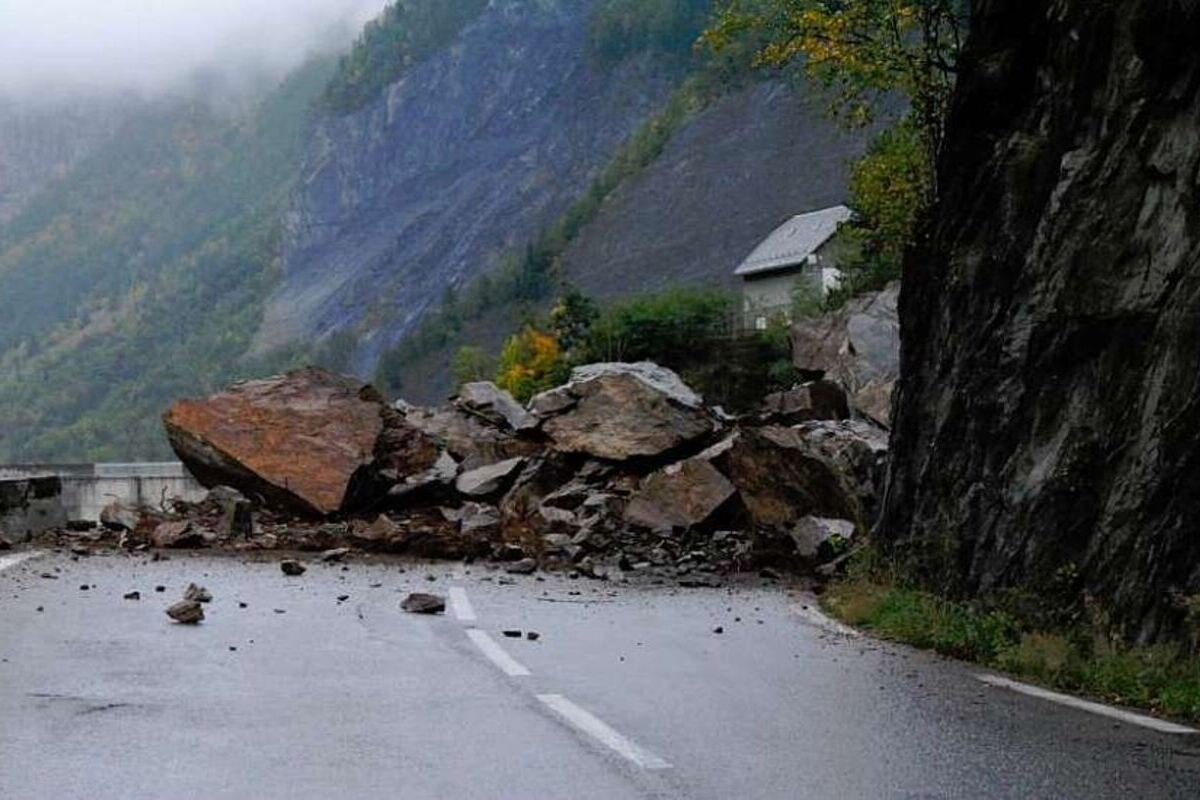Rockfalls are among the most dangerous natural phenomena in mountainous areas, occurring suddenly and often causing serious consequences. Tourists, climbers and local residents fear them because even a single rock falling from a height can pose a fatal threat. Despite their destructive nature, rockfalls are a natural result of complex geological and climatic processes closely tied to the terrain and weather conditions. The causes behind falling rocks can be numerous and difficult to predict, even by experienced professionals. Below is a collection of the most interesting and educational facts about rockfalls that you might not know.
- A rockfall is a process in which fragments of rock detach from a steep or vertical slope and fall rapidly downwards. It often begins with a minor shift that escalates into the release of a larger mass of rock. Such events usually occur on slopes steeper than 45 degrees. They are especially dangerous in narrow ravines and along mountain roads.
- Rockfalls most commonly occur during rapid temperature changes, especially in spring and autumn. During the day, rocks heat up and at night they cool quickly, which causes the rock structure to crack. Water trapped in the cracks freezes and expands, gradually breaking the rock from within. This process is known as frost weathering and is a major cause of rockfalls.
- Heavy rainfall and snowmelt are also frequent causes of rockfalls. Large amounts of water penetrate the soil and erode the base of the slope, weakening its stability. As a result, the rock loses its support and begins to collapse. Regions with loose geological formations are particularly vulnerable to such processes.
- Rockfalls can last from a few seconds to several minutes and cover large areas. The speed of falling rocks can exceed 100 kilometers per hour. They do not just roll but also bounce off the ground and spread in different directions. This makes the impact zone wide and unpredictable.
- Rockfalls are classified based on size and the nature of the descent, ranging from small debris flows to massive collapses. The smallest ones create gravel or fine rubble, while the largest boulders can weigh several tons. Major collapses often leave behind craters or block riverbeds completely. In some cases, temporary lakes form and later break, causing floods.
- The term rock avalanche refers to an extremely fast and large-scale fall of rock masses. Such avalanches can destroy everything in their path including forests, roads, buildings and bridges. In 2009, a rock avalanche in Italy completely buried a village under tons of stone. These events are rare but have catastrophic consequences.
- One of the most famous locations for recurring rockfalls is Death Valley in Yosemite National Park, USA. Dozens of falls are recorded there annually, some with tremendous force. Because of the danger, certain hiking trails are closed seasonally. Despite the risks, the area continues to attract researchers and thrill-seekers.
- Rockfalls often cause serious accidents on mountain roads, particularly in high-altitude regions. Vehicles can be completely crushed and people may become trapped for extended periods. In many countries, special nets, galleries and barriers are installed along slopes for protection. These engineering solutions significantly reduce the risk of disasters.
- In Switzerland and Austria, special monitoring centers track the condition of slopes 24 hours a day. They use motion sensors, satellite imaging and geophysical methods to detect potential threats. Thanks to these systems, local authorities can evacuate residents in time or close roads when necessary. Such measures save lives and reduce economic losses.
- Some types of rock are more prone to falling, including limestone, sandstone and shale. These rocks have a layered structure that breaks down over time due to environmental factors. Granite and basalt are more resistant, though under certain conditions they can also collapse. Knowledge of the geological composition helps assess risk levels in specific areas.
- Human activity can also trigger rockfalls, such as road construction, blasting operations or mining. Disturbing the natural balance of a slope may activate landslides even years later. Therefore, all mountainous projects are preceded by geotechnical studies. In some cases, slopes are reinforced artificially to prevent potential hazards.
- Rockfalls may occur as a result of or in response to earthquakes. Even minor seismic tremors can trigger collapses on steep terrain. Such events are especially dangerous in densely populated areas or along popular tourist trails. That is why seismic activity is taken into account when evaluating rockfall risks.
- Rockfalls play a role in shaping the landscape, creating scree fields, rock slopes and cliffs. Over time, they contribute to the erosion of mountain masses and the accumulation of debris in valleys. Some geographic features, such as blockfields, are formed entirely through long-term rockfall processes. These areas often develop unique plant life and microclimates.
- Researchers use laser scanning and drones to create three-dimensional models of slopes to better understand rockfall mechanisms. These tools can detect even the smallest changes in rock structure. Thanks to this technology, several dangerous events have been predicted in advance and prevented. The collected data is also used in education and safety system development.
- In folk culture, rockfalls are rarely mentioned, but in some myths they were seen as signs of nature’s or the gods’ wrath. In mountainous regions, stories were passed down about entire villages being destroyed by collapsing rock. These tales often carried moral lessons about disrespecting nature. As a result, such disasters became part of collective memory.
These incredible facts about rockfalls show how complex and significant this natural phenomenon is in mountain environments. Rockfalls not only shape the terrain but also impact safety, infrastructure and ecosystems. Modern technologies help us understand them better and reduce their risks. Nevertheless, nature remains powerful and must always be treated with respect.





